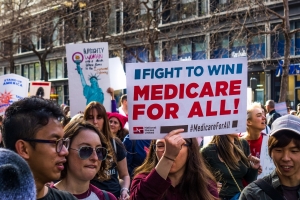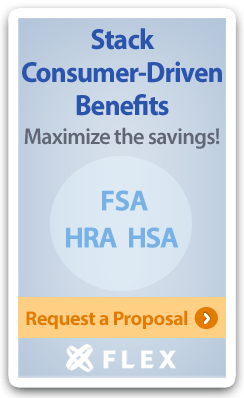Benefits Buzz
What is Medicare For All?

The term “Medicare for All” has been making headlines recently. Democrats across the country have made this concept a central part of their platforms, and polls have shown that more than half of Americans are in favor of it.
But what does it really mean? Well, the best answer is that it means different things to different people.
Universal Coverage
Historically, Medicare for All has meant a universal program whereby every American receives insurance coverage through Medicare. This system would create a single-payer health insurance plan run by the federal government that would largely replace private health insurance. The new plan would be similar to government-run health care programs in Canada and the UK.
Under the Universal Coverage option, there would be no premiums to access the plan, but the program would be offset by higher taxes. The plan would include coverage for medical, dental, vision and hearing expenses. Advocates for this brand of Medicare for All say that this method of delivering healthcare will save money and improve health outcomes. Detractors worry that the plan will be too expensive, costing the U.S. tens of trillions in tax dollars.
Perhaps the most well-known proponent of Universal Coverage is Sen. Bernie Sanders (I-VT). Sanders’s Medicare for All bill was a cornerstone of his 2016 presidential campaign. Since then, many other Congressional Democrats have come out in support of the plan, including Sen. Kamala Harris (CA) and Rep. Alexandria Ocasio-Cortez (NY-14).
Public Option
Not everyone interprets Medicare for All as Universal Coverage, however. Another approach is to create a so-called Public Option that could be purchased as an alternative to private health insurance. Most of the proposals for the Public Option would include coverage for Essential Health Benefits, as defined by the Affordable Care Act (ACA). Premiums would be set by the government, and there would be access to subsidies.
The Public Option would build on, rather than replace, the current mix of private insurance and public coverage. The government-run plan would be offered alongside private insurance available through the marketplace for individuals and some or all employers.
Advocates of the Public Option believe that it would offer a lower-cost alternative for people who cannot afford expensive private insurance plans, particularly those whose employers don’t offer health insurance. At the same time, it would allow those who currently receive health insurance through their employers, or who purchased an individual plan on the exchange, to continue their current coverage, if they wish to do so. Some who oppose this solution say that it doesn’t go far enough to make sure that all Americans have access to health insurance, as individuals would still be required to buy health insurance.
Jan Schakowsky (D-IL), Michael Bennet (D-CO), and Jeff Merkley (D-OR) have all proposed different versions of the Public Option.
Medicare Expansion
There is yet another set of proposals that could best be described as “Medicare For More.” These options would allow Americans to buy into Medicare at a younger age.
Sen. Debbie Stabenow (D-MI) introduced legislation that would allow Americans aged 55 to 64 to purchase Medicare coverage. Individuals who buy in would be entitled to standard Medicare benefits and could elect Medicare Advantage, prescription drug plans, or both. A similar measure introduced in the House would allow people to buy in at age 50.
The prevailing theory behind the Medicare Expansion option is that Americans between the ages of 55 and 64 are burdened by high insurance premiums, unaffordable deductibles, and limited options. Allowing them to enroll in Medicare at an earlier age would give them access to more affordable, quality health care coverage.
This option has gained favor with more moderate Democrats who worry about expanding entitlements and increasing the deficit. Those who would gain access to Medicare under this option would pay nationally established premiums, which would help reduce the taxpayer burden. In addition, younger healthier people buying into Medicare would help offset the costs of older, sicker seniors.
What’s Next?
Whether or not any of these Medicare For All options will come to fruition remains to be seen. For now, it seems to be a largely partisan issue, with most Republicans unlikely to support such an initiative. Even if the Democrats end up in control of Congress and the White House after the 2020 elections, there are so many opposing viewpoints within the party that it would be a lengthy process to come up with proposed legislation that could stand up to a vote. Any Medicare-for-all bill that did manage to pass would most likely be implemented in stages like the ACA, which was initially passed in 2010, but not fully implemented until 2014.
There’s no doubt that Medicare for All—in any of its forms—would represent a huge change to the American healthcare system. However, it’s not likely that we’ll see it become a reality in the near future. It is almost guaranteed, however, that we’ll be hearing a lot more about this issue in the run-up to the 2020 elections.
Have a question about Medicare?

